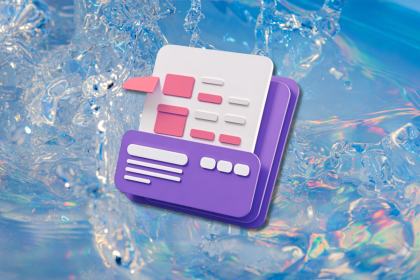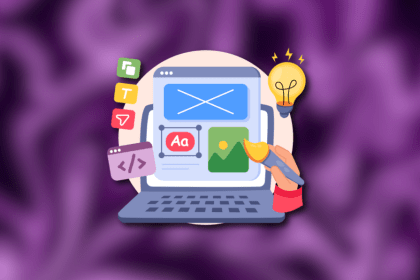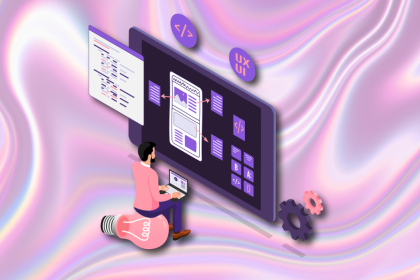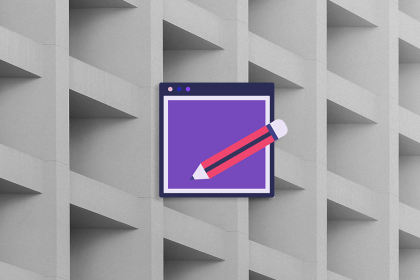TL;DR — I thought doing great work was enough to get promoted. It wasn’t. This is what I learned about visibility, value, and taking control.

At my first job as a UX designer, I was promoted from associate to mid-level in about a year and a half. I had worked closely on a project with my former team lead, who eventually moved on to a new opportunity. I was ready to step up, lead design for the project, and grow into a senior designer.
Over time, my skills improved significantly. I became more confident in my decisions, refined my process, and collaborated more effectively with my cross-functional peers. In 1:1s with my manager, I consistently received positive feedback and encouragement to keep up the strong work. I was reassured that I was on track for a promotion to senior designer.
But weeks turned into months, and promotion cycles came and went. Each time, I was met with the same reasons. Company-wide promotion freezes, only one spot available that went to someone else, or that I needed to demonstrate senior-level performance for a full year before being considered.
And meanwhile, my LinkedIn feed was full of former classmates celebrating senior titles — some with just three years of experience. I started to doubt myself. I even considered giving up on chasing the promotion altogether.
The truth is, it’s not always about your skillset or your years of experience. Promotions can be influenced by factors far beyond your control. And at the end of the day, a job title doesn’t define your worth as a designer. So let’s talk about why you might be stuck as a mid-level designer and what you can do when that promotion feels just out of reach.
If you’re feeling stuck as a mid-level designer, the first question to ask is — Am I actually ready for a promotion?
To answer that, it helps to understand what sets senior designers apart. A healthy organization will have a career ladder that outlines the scope and responsibilities of each role. The career ladder equips you with a guideline to follow and helps you identify the areas in which your skills might be lacking. A good manager will support your career by helping you focus on strengthening your weak spots in order to prepare you for the next level.
Now, companies may have their own different definitions of what a “mid-level” or “senior” designer should be, so a senior designer at one company may be considered a mid-level designer at another.
But generally, some key differences separate the two:
When it comes to core design work, mid-level designers should be able to deliver solid designs for their assigned projects. This means following design system patterns, considering different UI states, and documenting key interactions.
Senior designers differentiate themselves by understanding when a design solution might run into scalability or responsiveness issues and can adapt the solution by documenting edge cases. They not only advocate for consistent use of design system patterns, but also know when to break the rules and push for innovative patterns when necessary.
Design and product teams work hand-in-hand, which is why it’s so important for designers to have a strong alignment with the product vision. A good mid-level designer should understand product goals, such as OKRs, and deliver designs that meet the needs of their users at a feature level.
Senior designers will think more holistically about the product goals and understand how each feature works together within a system. They suggest ideas or opportunities that will drive measurable outcomes, which could be across multiple touchpoints in the user journey. In this way, they are not just designing the next feature, but helping shape the future of the product.
A big part of a designer’s role is being able to collaborate with cross-functional peers and communicate thoughts and ideas effectively. Mid-level designers should actively engage in team rituals, such as sprint planning, desk checks, and design reviews. These often include conversations with product and engineering stakeholders where it’s crucial to be able to communicate the proper context and be open to changes based on feedback.
A senior designer facilitates discussion with cross-functional partners by knowing which stakeholders to include for certain conversations. They can clearly present and defend their design decisions to stakeholders, which often includes negotiating trade-offs.
Also, senior designers can strategically position their arguments based on the interests of their stakeholders to gain buy-in from them.
A key difference between mid-level and senior designers is their level of ownership over projects. Mid-level designers are responsible for a few different product areas and are assigned tickets to work on, which are usually defined for them.
Senior designers can be responsible for a wider scope, taking on complex problems that often require discovery. They advocate for initiatives that can lead to innovation or significant business or user value.
While mid-level designers seek guidance from others in the face of ambiguity, seniors act as design authorities, who are capable of inspiring and uplifting the rest of their team.
Based on these focus areas, ask yourself:
If yes, you may be performing at a senior level — even if your title doesn’t reflect it.
If you’ve determined that you have been performing at a senior level, there are still plenty of reasons outside of your control that your manager isn’t giving you a promotion.
Politics can play a big role when it comes to who gets promoted. Often, managers are given a limited number of promotions for their team, so you may get passed over for someone else who has been with the team longer or has made themselves more visible to leadership.
A good manager should advocate for you by communicating your wins and impact to leadership. Ask your manager what specifically you need to work on in order to be put up for promotion. Work with them to get placed on high-visibility projects that present opportunities to create business value.
Completing high-impact projects can strengthen your case for a promotion, as you are seen as a leader who brings value and more business to the company.
But sometimes your manager may not have the final say, and their efforts can only go so far. Other internal factors that affect your chances of promotion include how the company is doing in the current economic environment, as cost-cutting can lead to a promotion freeze across the board.
I’ve also heard the unwritten rule that you have to perform at a senior level for a certain amount of time before being considered for a promotion.
Earlier, I mentioned that companies have different definitions when it comes to seniority. The truth is, a senior designer at one company could be considered a mid-level designer at another. Often, small companies and startups use title inflation as a way to motivate employees to stay with their organization. Frequent promotions give the illusion of faster career progress, which makes people feel acknowledged for their skills and optimistic about their future.
Conversely, big tech companies are notorious for “down-leveling” new hires to mitigate the risk of bringing on an under-performer at a certain level. They also have the allure of “prestige” that comes with a name-brand company compared to a lesser-known startup, which gives them leverage when hiring.
So while a candidate might have been a senior designer at their previous job, the hiring manager may offer them a mid-level position with the intent that they would get promoted quickly if they maintain a strong performance.
Based on title inflation alone, it can be hard to compare apples to apples when one company defines seniority differently than another. You may be a mid-level designer performing at a senior level, just not in the eyes of your company. That doesn’t make you any less skilled or experienced.
Comparing yourself to others is never productive. Each person has a unique set of skills, experiences, and circumstances. Thus, it may be better not to compare yourself at all and focus on the things you can control, like upskilling and gaining more quality experience.
However, if you can’t help but compare, then instead of job title alone, look at other factors, such as responsibilities, scope of completed projects, total compensation (if comparing similar-sized companies), or general career satisfaction, to determine whether or not you are really falling behind your peers.
If you find yourself in career limbo, not getting promoted, and unsatisfied with your role, it might be time to move on. Sometimes you just outgrow your environment. You’ve done all you can within your current team to prove your capabilities, but you’re not receiving the career support you need.
Your first option could be looking at internal opportunities to switch teams at a senior level. If another team within your company is hiring a senior designer, consider applying for the position, as your current tenure can give you an advantage over external applicants.
Otherwise, it may be time to brush up on your resume and update your portfolio. Make sure to highlight case studies of your most impactful work, showcasing the complexity of the problems but communicating the solutions in an easy-to-understand way. Hiring managers not only want to see the user outcomes of your work, but also the impact that it had on the business.
To support your portfolio, ask for recommendations or testimonials from your current manager or teammates who can vouch for your skills and capabilities. Having these can give you extra credit when hiring managers view your portfolio, especially if they come from senior-level stakeholders.
In the design field, promotions can be messy, and titles are not the same across the board. A lot that goes on behind the scenes of a promotion cycle is often out of your control, but what you can control is your personal development as a designer.
Instead of chasing the “senior designer” title, focus on upskilling and working on projects that deliver impact and resonate with your values. Remember, you won’t be stuck at mid-level forever, but you do need a strategy to fight your way out.
As long as you continue with this mindset, eventually you will earn your spot amongst senior designers, whether it’s at your current company or a different one.
LogRocket's Galileo AI watches sessions and understands user feedback for you, automating the most time-intensive parts of your job and giving you more time to focus on great design.
See how design choices, interactions, and issues affect your users — get a demo of LogRocket today.

Small actions can have large consequences in complex systems. Here’s how UX designers can manage dependencies so users feel informed and in control rather than blocked or blindsided.

This article examines when hero sections are necessary in digital products, when they create friction, and how to evaluate them using UX goals, primary actions, user flow impact, and real-world alternatives.

AI speeds up tasks like research synthesis, ideation, and first-draft wireframes, but it can’t replace clarity, taste, or decision-making. Here’s a grounded look at what AI actually does well in UX right now.

Discover how to craft UX-friendly hero sections with examples, design tips, and strategies that drive engagement and conversion.